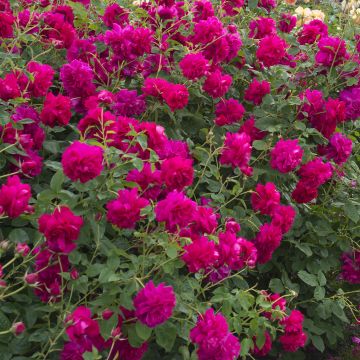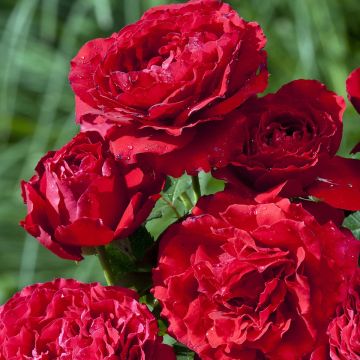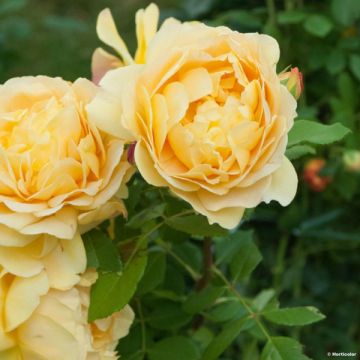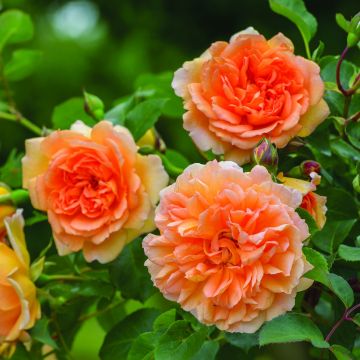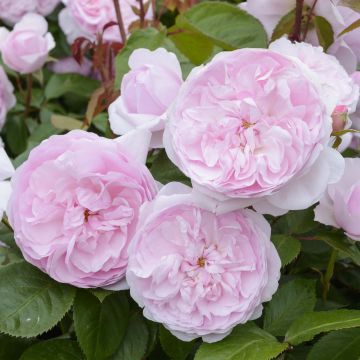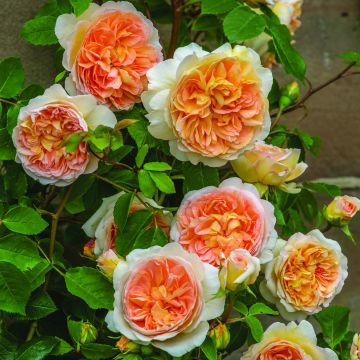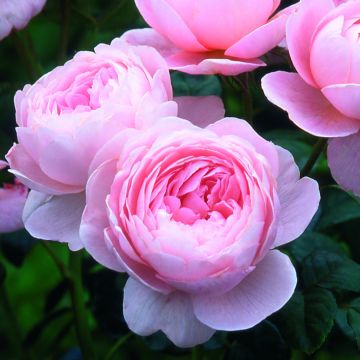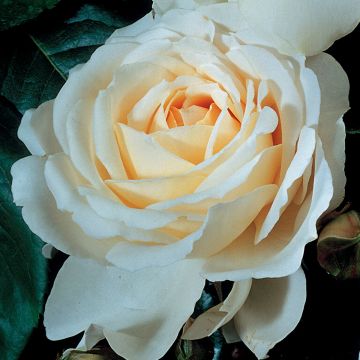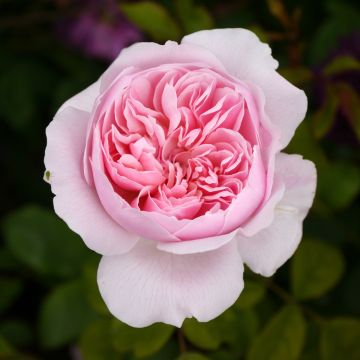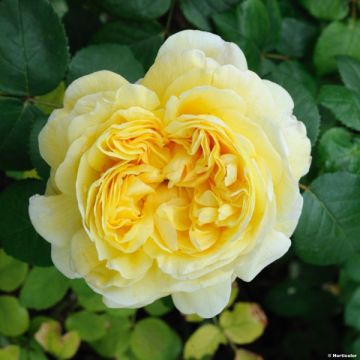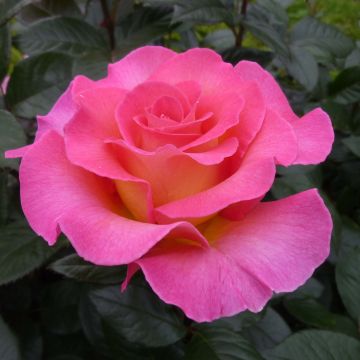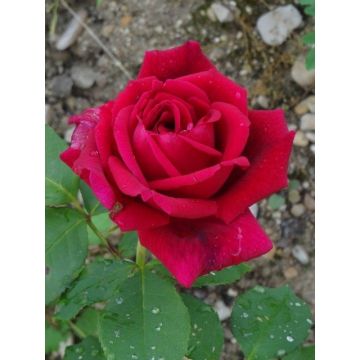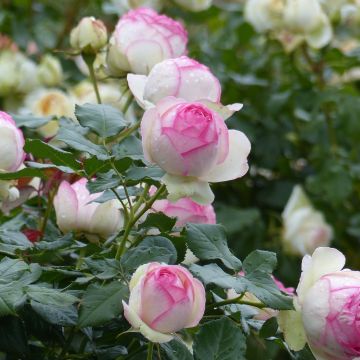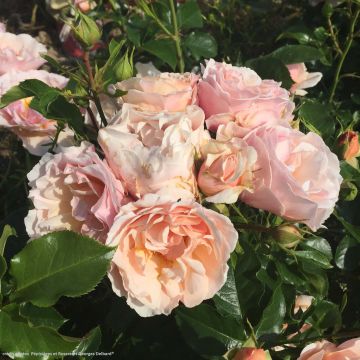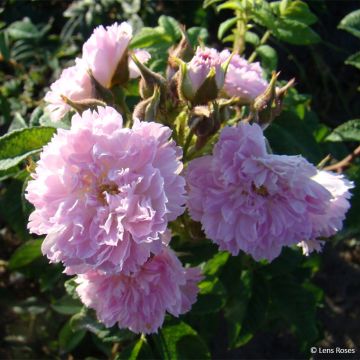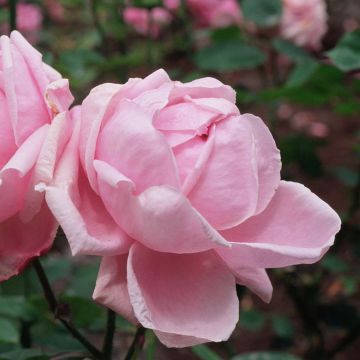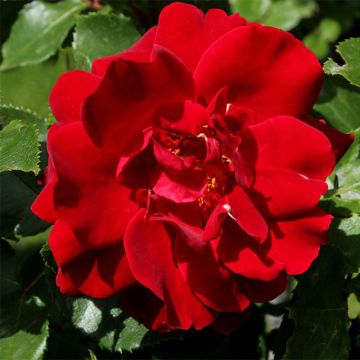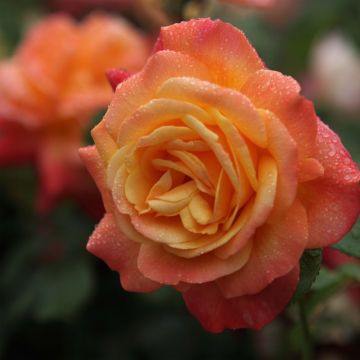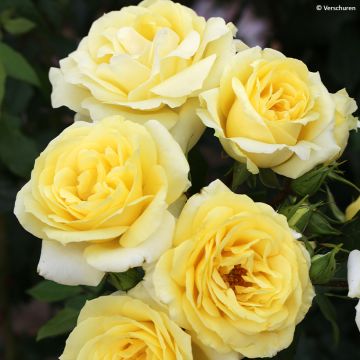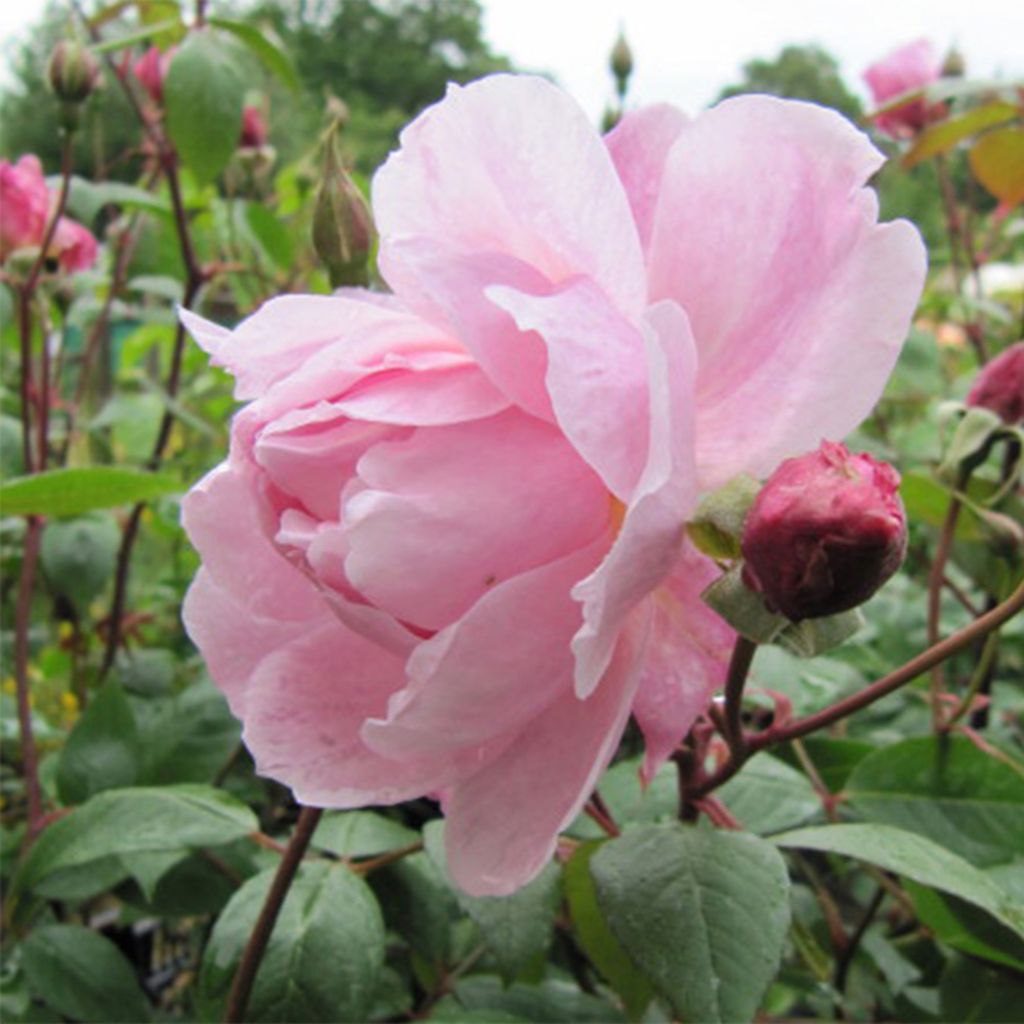

Rosa Mortimer Sackler climbing 'Ausorts'
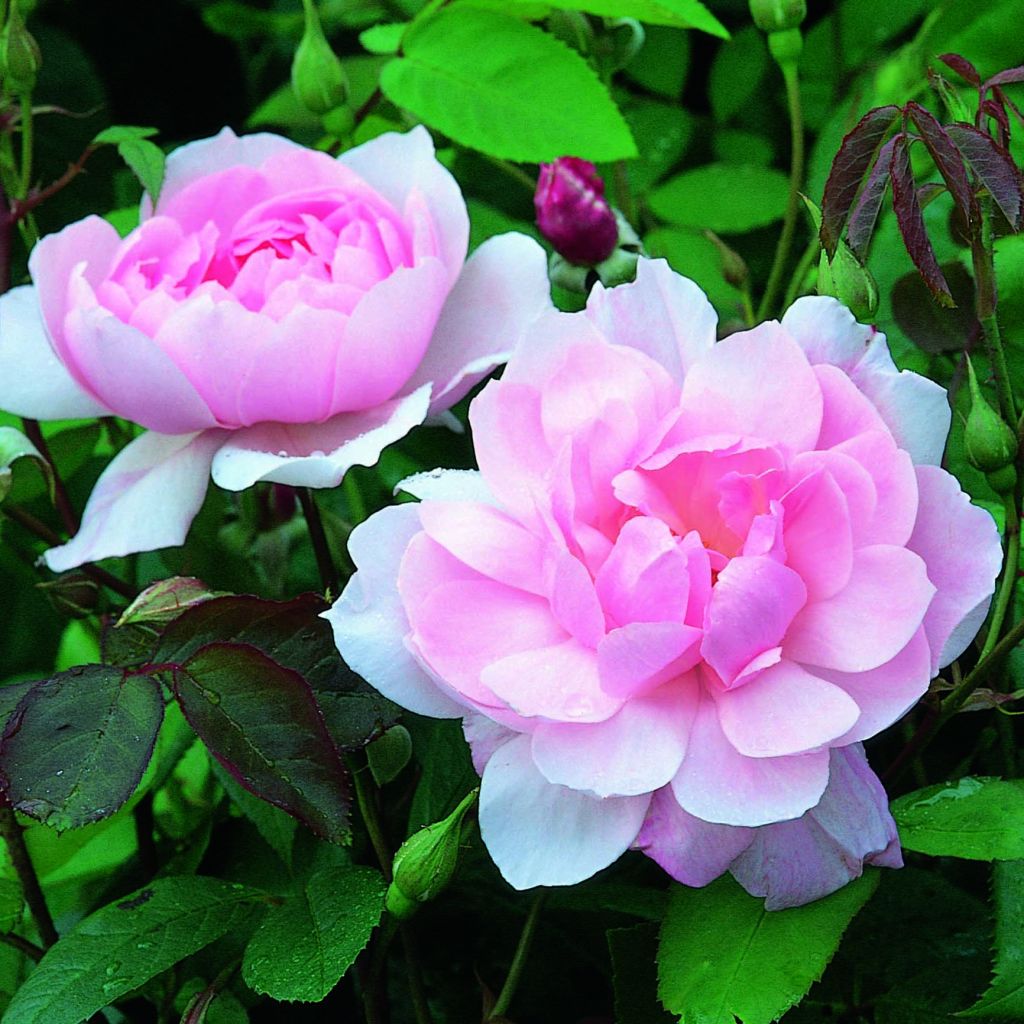

Rosa Mortimer Sackler climbing 'Ausorts'
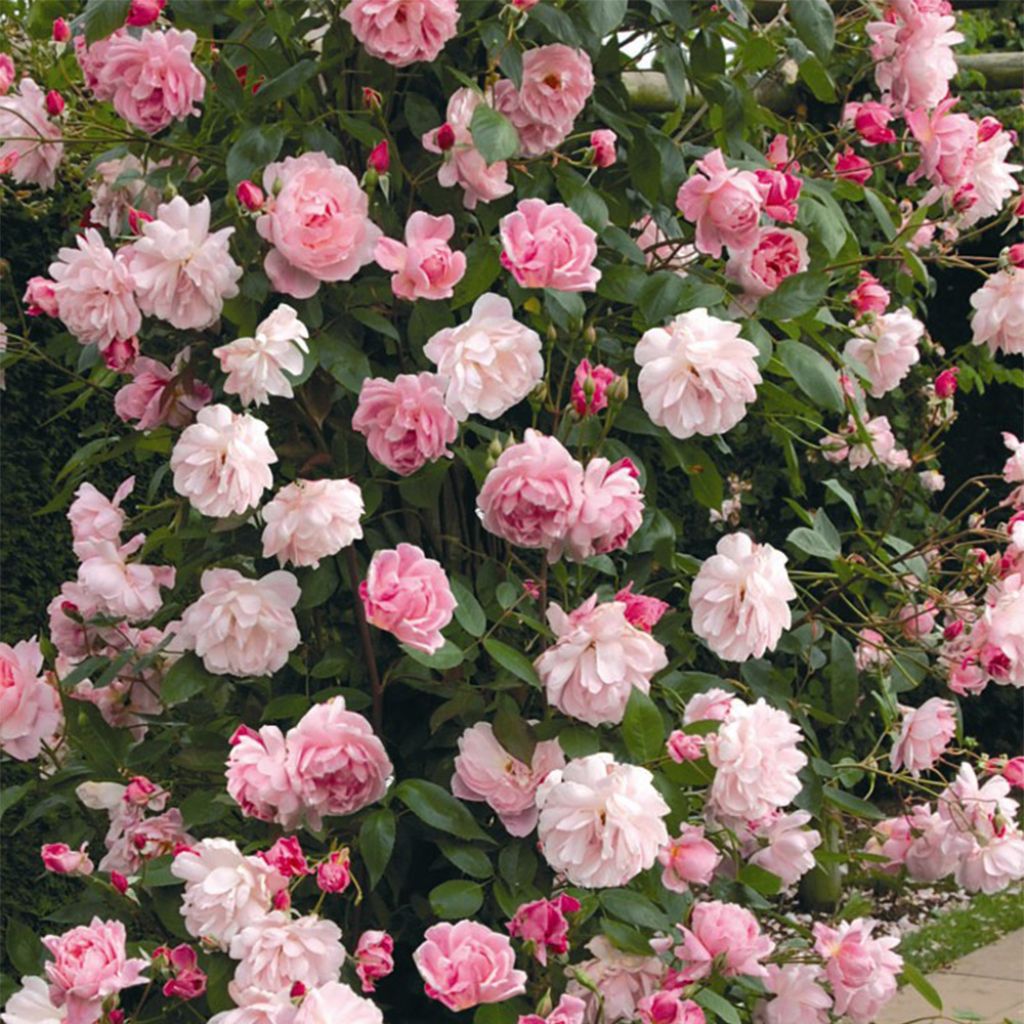

Rosa Mortimer Sackler climbing 'Ausorts'
Rosa Mortimer Sackler climbing 'Ausorts'
Rosa Mortimer Sackler® climbing 'Ausorts'
Rose
Very beautiful rose bush that easily took root and even though it's not in direct sunlight, it blooms continuously." Analysis: - "rose bush" is a more accurate translation for "rosier" as it refers to the entire plant, including the stems and leaves, not just the flowers. - "took root" is a more accurate translation for "a pris" as it conveys the idea of the plant successfully establishing itself in the soil. - "direct sunlight" is a more accurate translation for "au soleil" as it specifies that the plant is not exposed to intense sunlight. - "blooms continuously" is a more accurate translation for "fleurit sans arrêt" as it implies that the plant produces flowers continuously, without interruption.
Francoise, 06/02/2023
This item cannot be shipped to the selected country
Delivery charge from €5.90
Delivery charge from €5.90
Delivery to Corse prohibited
More information
Schedule delivery date,
and select date in basket
This plant carries a 24 months recovery warranty
More information
We guarantee the quality of our plants for a full growing cycle, and will replace at our expense any plant that fails to recover under normal climatic and planting conditions.
From €5.90 for pickup delivery and €6.90 for home delivery
Express home delivery from €8.90.
From €5.90 for pickup delivery and €6.90 for home delivery
Express home delivery from €8.90.
Delivery to Corse prohibited: UE law prohibits the import of this plant from mainland France to Corse as part of the fight against Xylella fastidiosa. Please accept our sincere apologies.
More information


Does this plant fit my garden?
Set up your Plantfit profile →
Description
The climbing English rose Mortimer Sackler is a charming and quite unusual climbing variety. It bears very beautiful flowers of medium size, moderately double and well-formed, soft pink, fading towards the outside. Its roses exude a typical old rose fragrance, with a delicious fruity touch. Its long stems are almost thornless, which allows it to be planted near a pathway.
This climbing rose sends out its large, arching stems at a minimum height of 3.25 m (11ft) from the ground, and covers an area of 1.5 m (5ft) in width. They emerge in a very dark purple shade, then turn green as they become adorned with superb light foliage, deep green sometimes tinged with purple, extremely healthy. The flowering is very perpetual, covering the plant from bottom to top. Its pale pink flowers, 9 to 10 cm (4in) in diameter, topped with slender raspberry pink buds, are a feast for the eyes. At full bloom, their corollas open up to reveal golden stamens. They tend to droop downward, allowing their beauty to be admired and their fragrance to be savored.
Like other climbers, the climbing rose Mortimer Sackler is invaluable for filling large spaces and giving a wild touch, planted at the back of slightly too formal flowerbeds. It is an ideal companion for dead trees that it will revive, old fences and hideous buildings or sheds to which it adds a charming touch. Trained on an arch, near the patio, or above an entrance, it will create a romantic and fragrant feature. Since its flowering lasts three months, it can be combined, for example, with Clematis texensis Princess Diana, a Japanese wisteria, a white jasmine, or a bright pink annual sweet pea.
Obtained by David Austin in 2012. It is a musk-scented English rose.
Report an error about the product description
Rosa Mortimer Sackler climbing 'Ausorts' in pictures
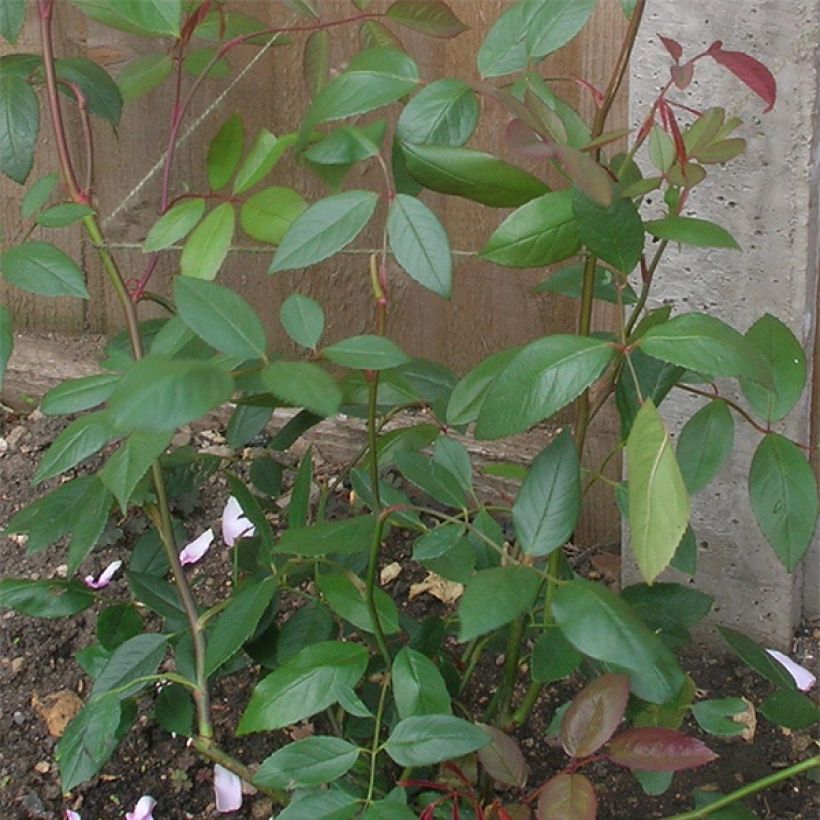

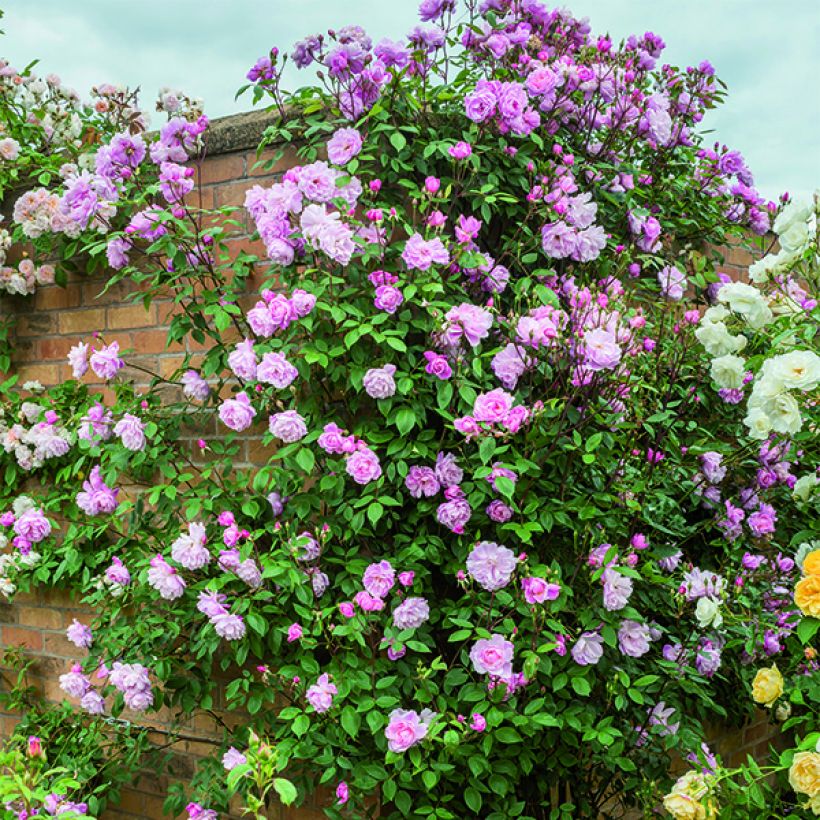

Plant habit
Flowering
Foliage
Botanical data
Rosa
Mortimer Sackler® climbing 'Ausorts'
Rosaceae
Rose
Cultivar or hybrid
Rosa canina Laxa (4L/5L pot, Wrapped bare root)
Other David Austin Roses
Planting and care
Plant your English Rose Mortimer Sackler in a sunny or lightly shaded position. English roses are tolerant but will not like excessive limestone. They will adapt to any garden as long as the soil is well worked and rich enough. To plant your rose, prepare the soil by crumbling it and adding an amendment, such as bonemeal, at the bottom of the planting hole. Water abundantly after planting to remove air pockets. Water regularly for a few weeks to encourage root growth.
Pruning English roses is essential for flowering.
For climbing roses: the previous year's flowering stems should be reduced to 3 or 4 buds or pruned to 15cm (6in). The new strong stems should be tied and the old stems removed if necessary. Choose an outward-facing bud for a more elegant habit. Also prune to remove dead wood and unsightly branches. Pruning should be at an angle above a bud. As the flowers bloom, remove faded flowers, as this stimulates the development of other buds.
Roses are often spotted or unsightly in late summer, but it is not a problem for their development. These spots are not harmful to the rose; it is a natural phenomenon.
Planting period
Intended location
Care
-
, onOrder confirmed
Reply from on Promesse de fleurs
Roses by purpose
Haven't found what you were looking for?
Hardiness is the lowest winter temperature a plant can endure without suffering serious damage or even dying. However, hardiness is affected by location (a sheltered area, such as a patio), protection (winter cover) and soil type (hardiness is improved by well-drained soil).

Photo Sharing Terms & Conditions
In order to encourage gardeners to interact and share their experiences, Promesse de fleurs offers various media enabling content to be uploaded onto its Site - in particular via the ‘Photo sharing’ module.
The User agrees to refrain from:
- Posting any content that is illegal, prejudicial, insulting, racist, inciteful to hatred, revisionist, contrary to public decency, that infringes on privacy or on the privacy rights of third parties, in particular the publicity rights of persons and goods, intellectual property rights, or the right to privacy.
- Submitting content on behalf of a third party;
- Impersonate the identity of a third party and/or publish any personal information about a third party;
In general, the User undertakes to refrain from any unethical behaviour.
All Content (in particular text, comments, files, images, photos, videos, creative works, etc.), which may be subject to property or intellectual property rights, image or other private rights, shall remain the property of the User, subject to the limited rights granted by the terms of the licence granted by Promesse de fleurs as stated below. Users are at liberty to publish or not to publish such Content on the Site, notably via the ‘Photo Sharing’ facility, and accept that this Content shall be made public and freely accessible, notably on the Internet.
Users further acknowledge, undertake to have ,and guarantee that they hold all necessary rights and permissions to publish such material on the Site, in particular with regard to the legislation in force pertaining to any privacy, property, intellectual property, image, or contractual rights, or rights of any other nature. By publishing such Content on the Site, Users acknowledge accepting full liability as publishers of the Content within the meaning of the law, and grant Promesse de fleurs, free of charge, an inclusive, worldwide licence for the said Content for the entire duration of its publication, including all reproduction, representation, up/downloading, displaying, performing, transmission, and storage rights.
Users also grant permission for their name to be linked to the Content and accept that this link may not always be made available.
By engaging in posting material, Users consent to their Content becoming automatically accessible on the Internet, in particular on other sites and/or blogs and/or web pages of the Promesse de fleurs site, including in particular social pages and the Promesse de fleurs catalogue.
Users may secure the removal of entrusted content free of charge by issuing a simple request via our contact form.
The flowering period indicated on our website applies to countries and regions located in USDA zone 8 (France, the United Kingdom, Ireland, the Netherlands, etc.)
It will vary according to where you live:
- In zones 9 to 10 (Italy, Spain, Greece, etc.), flowering will occur about 2 to 4 weeks earlier.
- In zones 6 to 7 (Germany, Poland, Slovenia, and lower mountainous regions), flowering will be delayed by 2 to 3 weeks.
- In zone 5 (Central Europe, Scandinavia), blooming will be delayed by 3 to 5 weeks.
In temperate climates, pruning of spring-flowering shrubs (forsythia, spireas, etc.) should be done just after flowering.
Pruning of summer-flowering shrubs (Indian Lilac, Perovskia, etc.) can be done in winter or spring.
In cold regions as well as with frost-sensitive plants, avoid pruning too early when severe frosts may still occur.
The planting period indicated on our website applies to countries and regions located in USDA zone 8 (France, United Kingdom, Ireland, Netherlands).
It will vary according to where you live:
- In Mediterranean zones (Marseille, Madrid, Milan, etc.), autumn and winter are the best planting periods.
- In continental zones (Strasbourg, Munich, Vienna, etc.), delay planting by 2 to 3 weeks in spring and bring it forward by 2 to 4 weeks in autumn.
- In mountainous regions (the Alps, Pyrenees, Carpathians, etc.), it is best to plant in late spring (May-June) or late summer (August-September).
The harvesting period indicated on our website applies to countries and regions in USDA zone 8 (France, England, Ireland, the Netherlands).
In colder areas (Scandinavia, Poland, Austria...) fruit and vegetable harvests are likely to be delayed by 3-4 weeks.
In warmer areas (Italy, Spain, Greece, etc.), harvesting will probably take place earlier, depending on weather conditions.
The sowing periods indicated on our website apply to countries and regions within USDA Zone 8 (France, UK, Ireland, Netherlands).
In colder areas (Scandinavia, Poland, Austria...), delay any outdoor sowing by 3-4 weeks, or sow under glass.
In warmer climes (Italy, Spain, Greece, etc.), bring outdoor sowing forward by a few weeks.

































